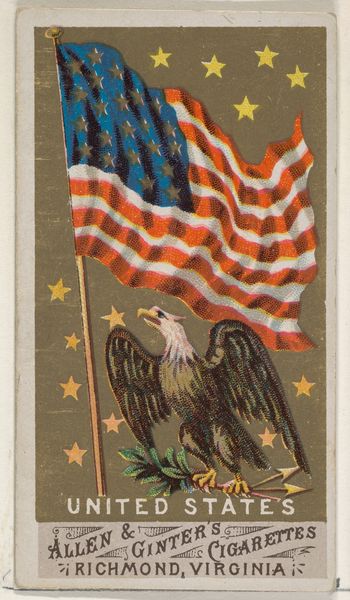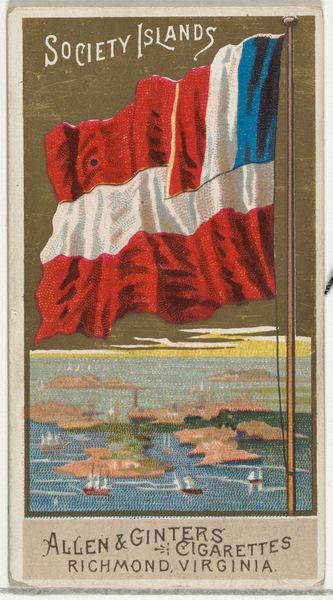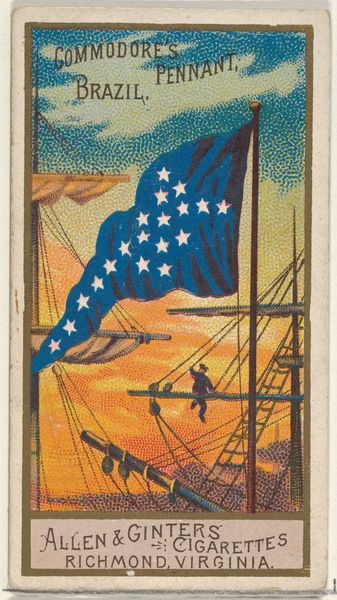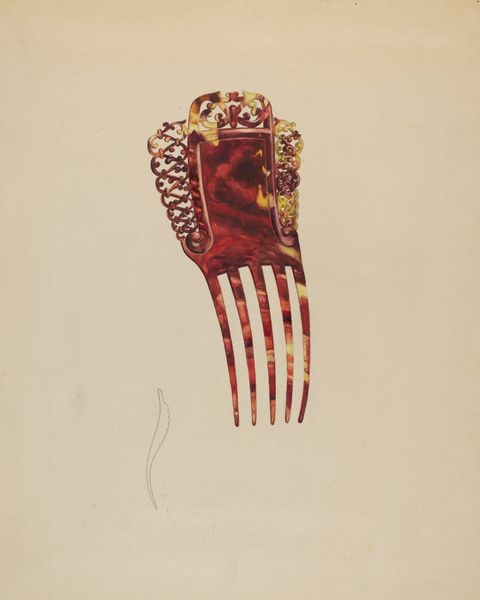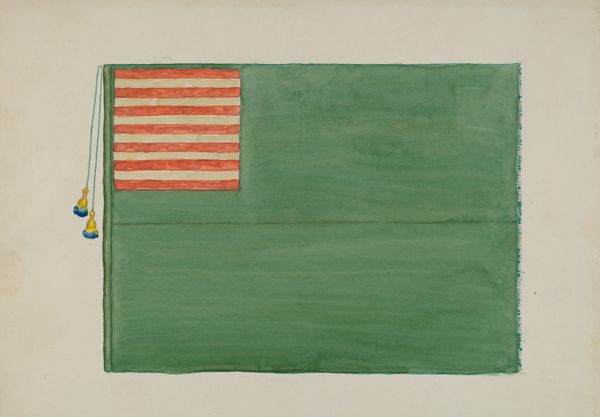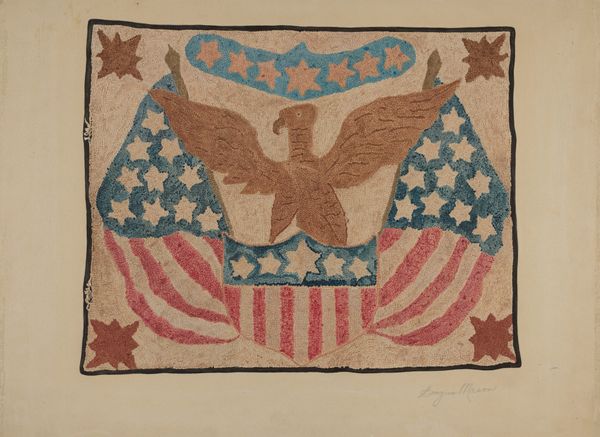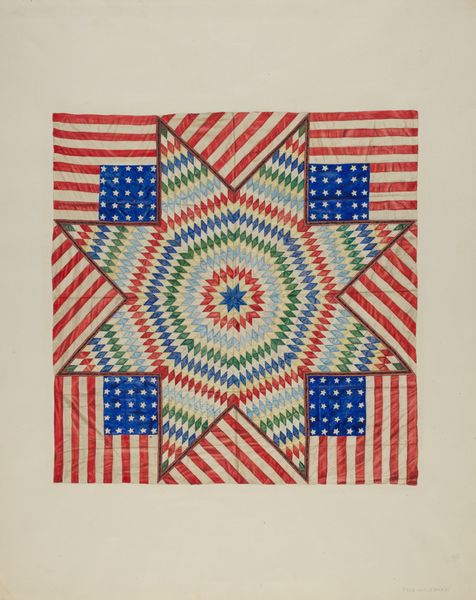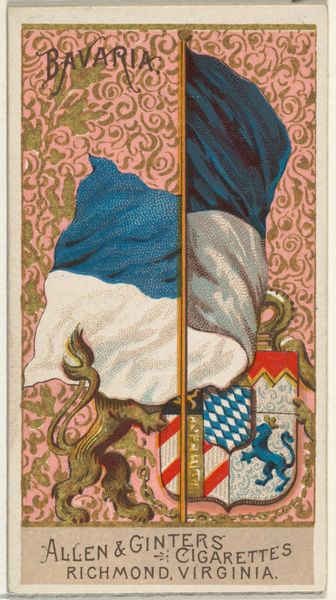
United States, from the National Flags series (N195) issued by Wm. S. Kimball & Co. 1891
0:00
0:00
drawing, coloured-pencil, print, paper, appropriation, poster
#
drawing
#
aged paper
#
toned paper
#
coloured-pencil
# print
#
landscape
#
paper
#
appropriation
#
coloured pencil
#
poster
Dimensions: Sheet: 4 1/4 × 2 9/16 in. (10.8 × 6.5 cm)
Copyright: Public Domain
Curator: I find this little tobacco card quite striking. It's entitled "United States, from the National Flags series (N195)" and it was produced in 1891 by Wm. S. Kimball & Co. Editor: It's aged well. The faded colours—that blue especially—lend it a wistful, almost antique feel. And that paper tone really evokes a sense of history. Curator: Absolutely. Think about the process here. This isn't just a drawing; it's a mass-produced commercial print, distributed to promote tobacco. The use of coloured pencils allowed for relatively quick replication while maintaining a certain aesthetic appeal. Editor: It really shows how symbols are manipulated and integrated into the everyday material culture of the late 19th century. Consider what the flag means here; its reduced form turns the nation into something consumed. Curator: The 'Mechanics’ Long Cut’ branding explicitly ties national pride to the working class, enticing them to literally consume the nation through smoking or chewing tobacco. Look how the design and printing facilitated this message! Editor: This piece encapsulates that tension between patriotism, labor, and consumerism. The flag, a symbol of unity and freedom, is being used to sell tobacco to workers. Where is their real liberation if their work simply goes into making things so they can turn around and consume something like this? Curator: Interesting point. What this all gets down to, though, is the labor involved, the production quality for something disposable, and how widely available this would have been due to distribution by Kimball. Editor: True. It acts as a sort of proto-propaganda that normalized the commodification of the nation for a population that already may have lacked autonomy over their bodies or their labor. Curator: So, in the end we have this unassuming object reflecting both national identity being meticulously reproduced alongside a stark image of commodity consumption. Editor: Leaving us to wonder about how it affected the socio-political landscape of its time. Thanks for exploring that with me!
Comments
No comments
Be the first to comment and join the conversation on the ultimate creative platform.

